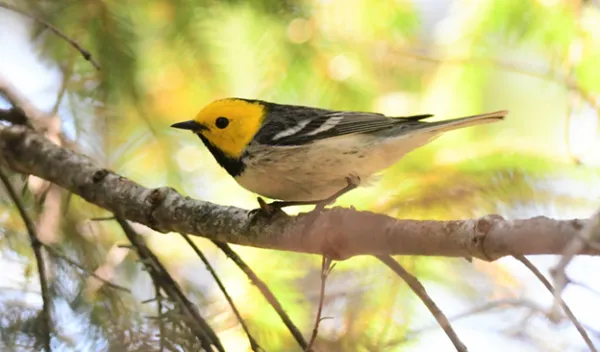
Older forests can buffer effects of climate change for some bird species
Old-growth forests and managed forests with old-growth characteristics can provide relief from climate change for some bird species, research by Oregon State University scientists and colleagues suggest.
The study builds on earlier research, which showed that old forests with big trees and a diversity of tree sizes and species can offer refuge to some birds threatened by a warming climate.
The latest findings have important implications for conservation decisions regarding mature forests, the scientists say. The research, published in Global Change Biology, looked at forest "microclimates." Microclimates are local atmospheric conditions, in areas ranging from a few square meters to many square kilometers, that differ from those of the surrounding area.
Microclimates tend to be most pronounced in areas of rugged and varied topography such as coastal areas, islands and mountains such as Oregon's Cascade Range, home to the U.S. National Science Foundation-supported H.J. Andrews Long-Term Ecological Research site, where the scientists did their research.
"This is a rigorous demonstration of where and why climate change will impact different species of birds," says Doug Levey, a program director in NSF's Division of Environmental Biology. "It helps scientists focus their attention on the forests and species that are most vulnerable."
The ecologists analyzed eight years of breeding bird abundance information from an H.J. Andrews watershed as well as subcanopy temperature readings and ground- and LiDAR-based vegetation data. They concluded that at locations with cooler microclimates, some bird species tended to do better — a phenomenon they describe as the "buffering effect."
Some species also fared better in places where the forest had more compositional diversity, referred to as the "insurance effect" because diversity helps ensure the presence of the insects the birds feed on when they most need nutrition and energy — during breeding season.
Under the current warming regime, some birds interact with this forest ecosystem to their benefit, while others will find it hard to breed there because the availability of food has changed.
The scientists found that for five of the 20 bird species they studied, abundance trends tended to be either neutral or less negative in cooler microclimates, and the negative effects of warming on two species were reduced in locations with greater forest compositional diversity.
